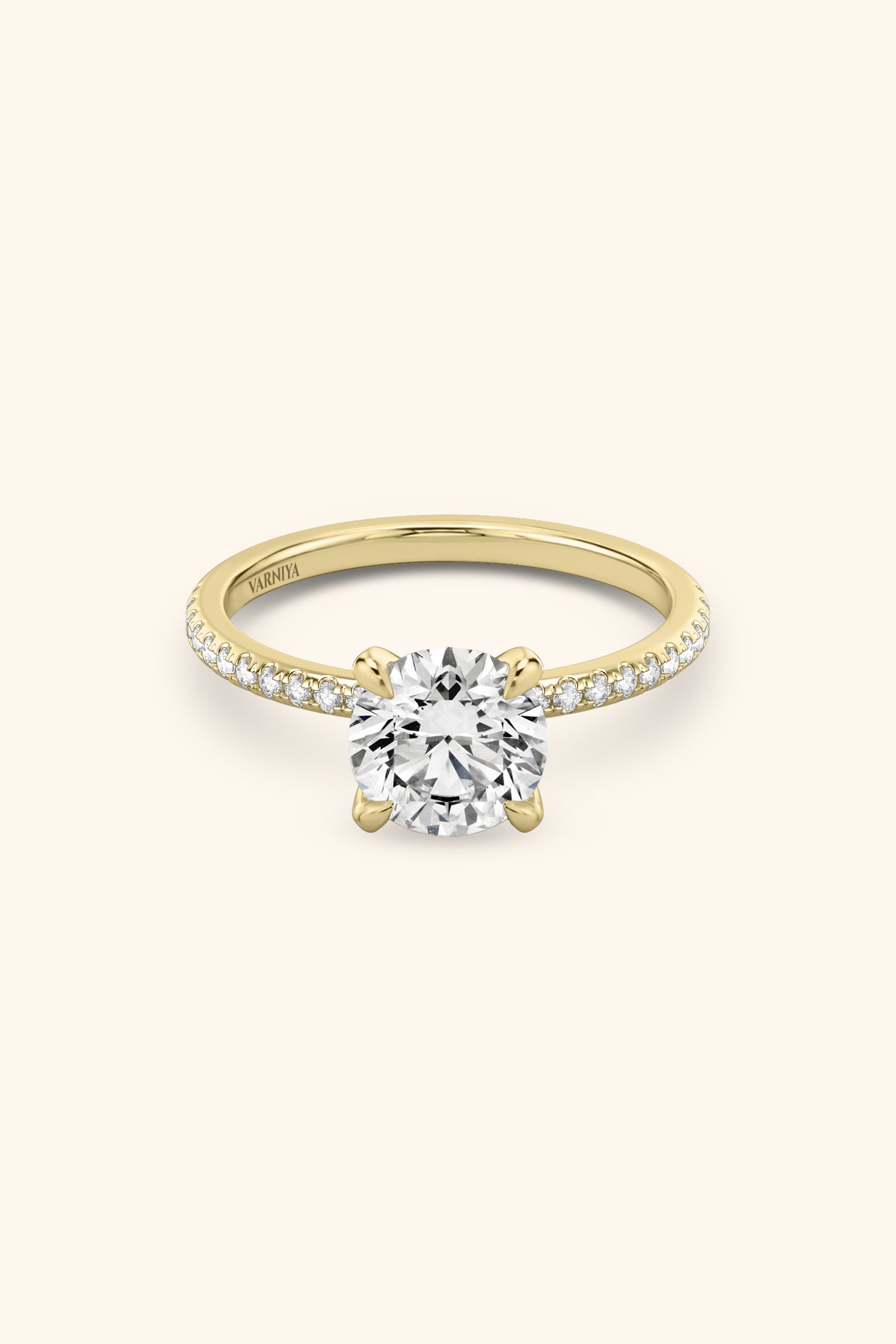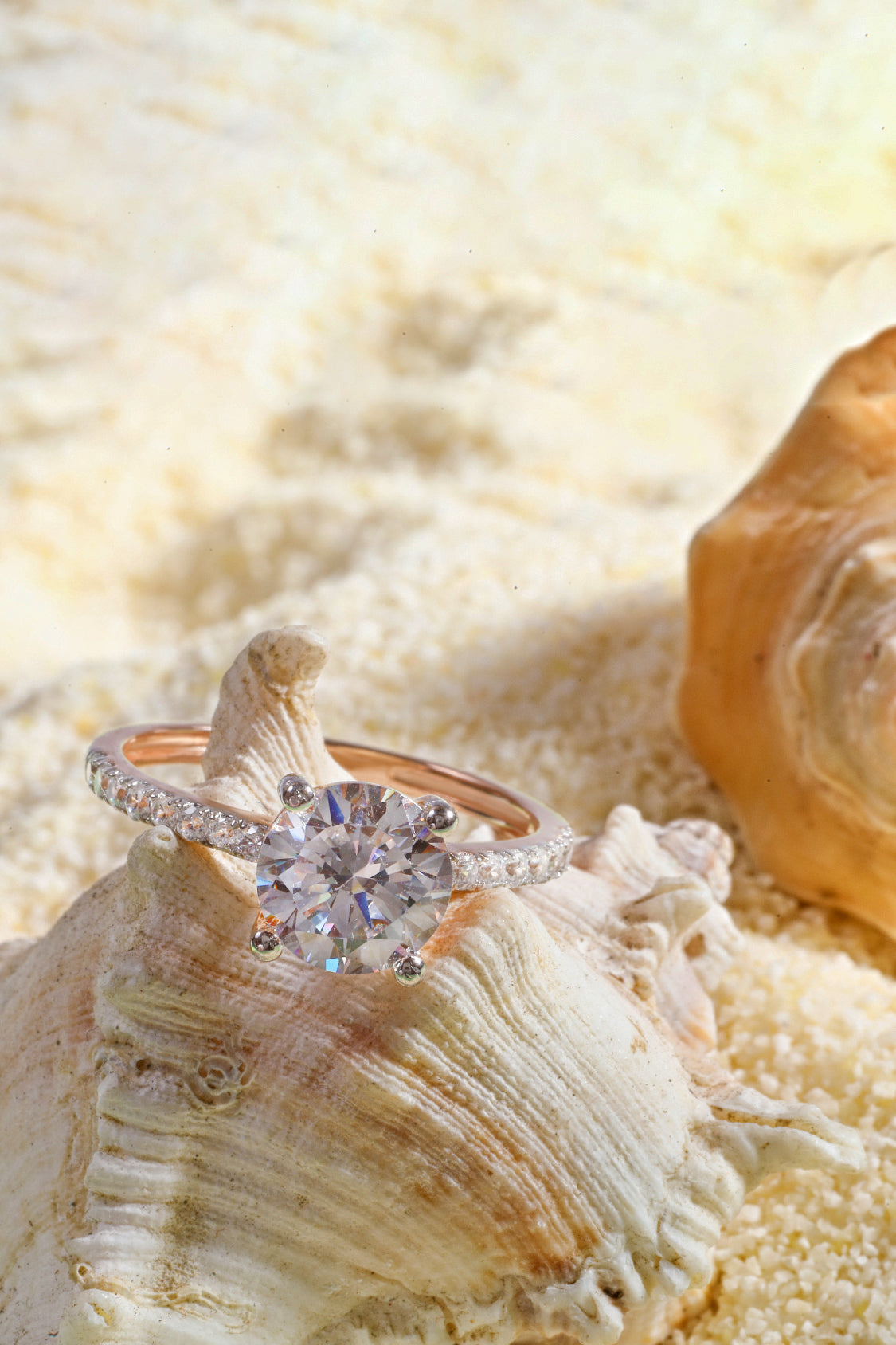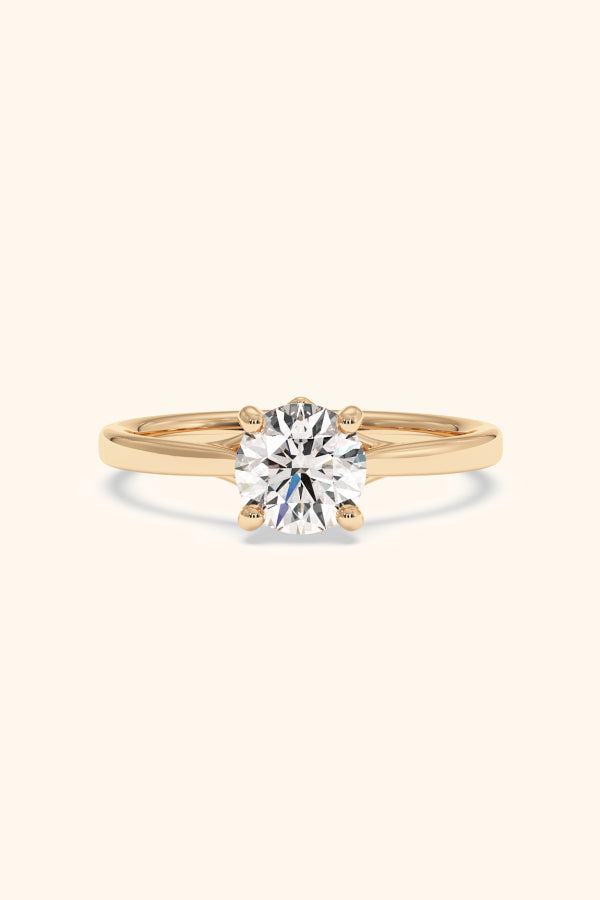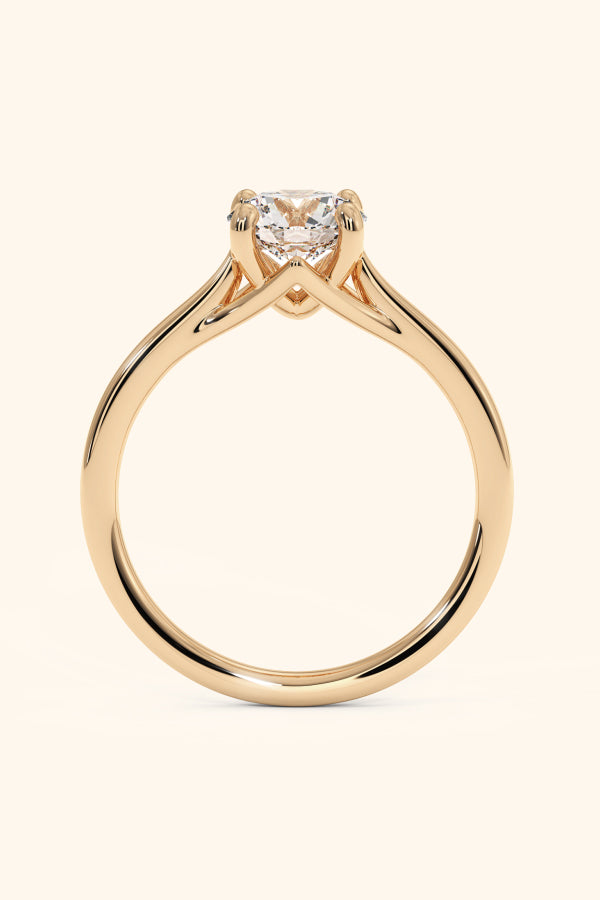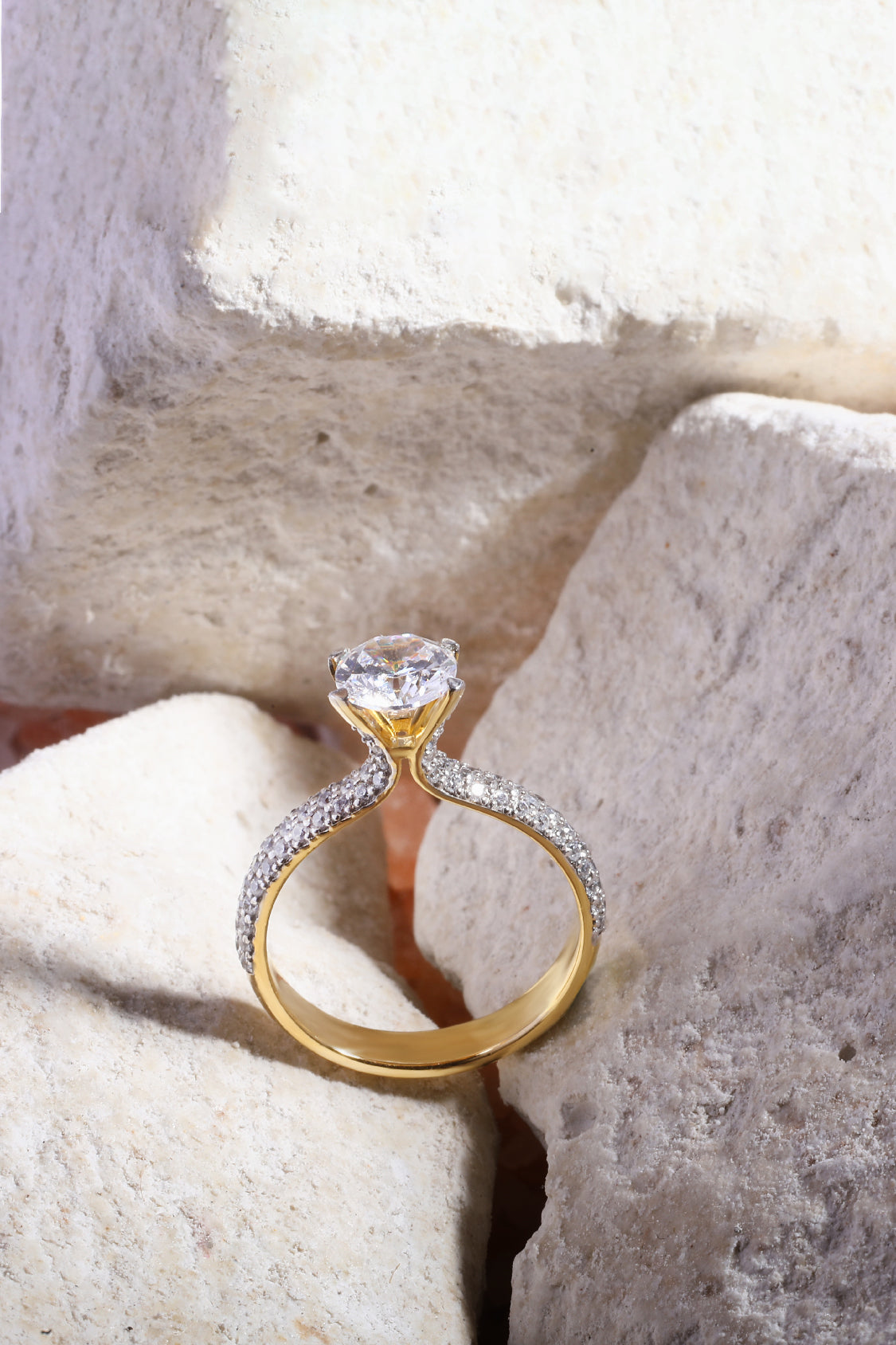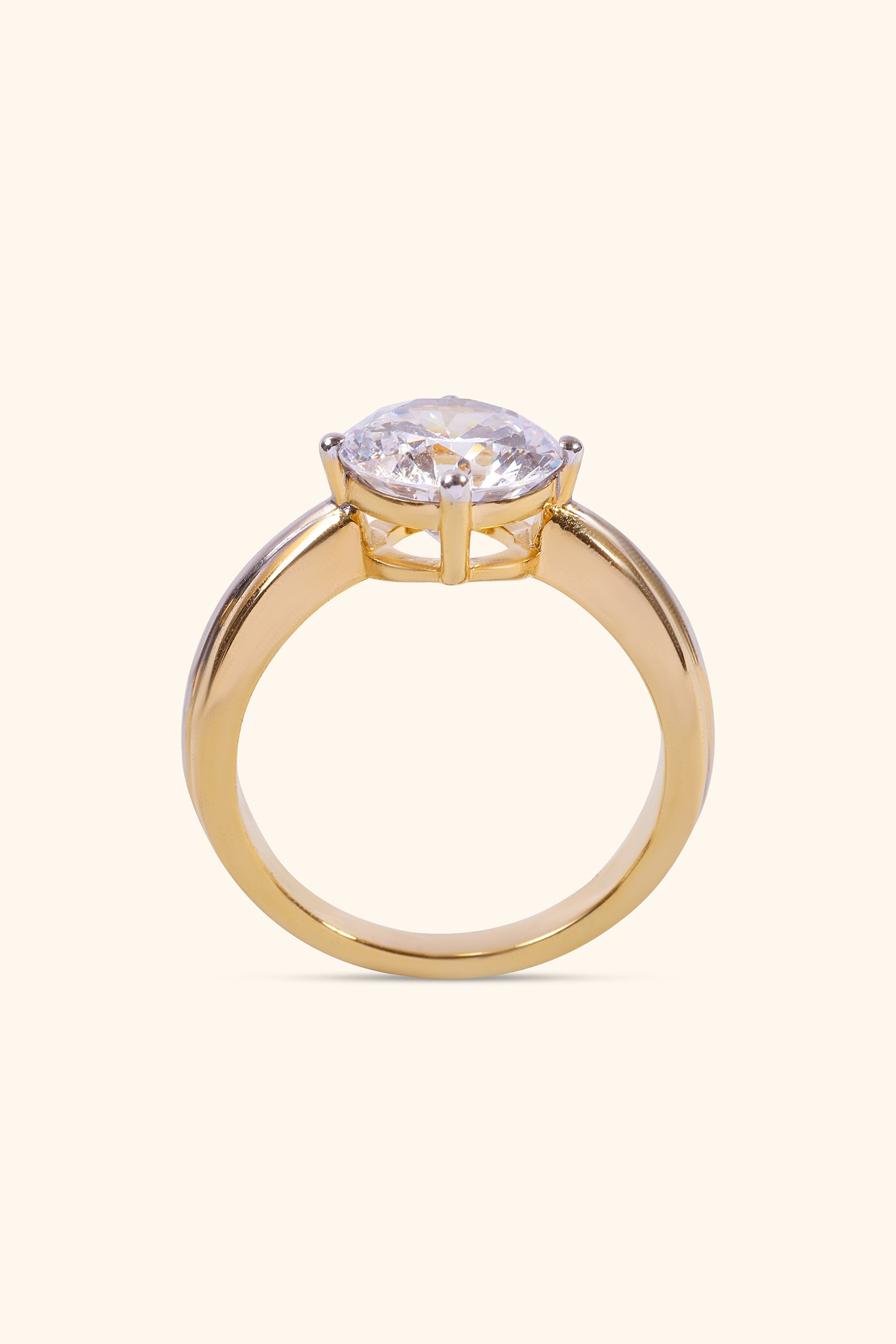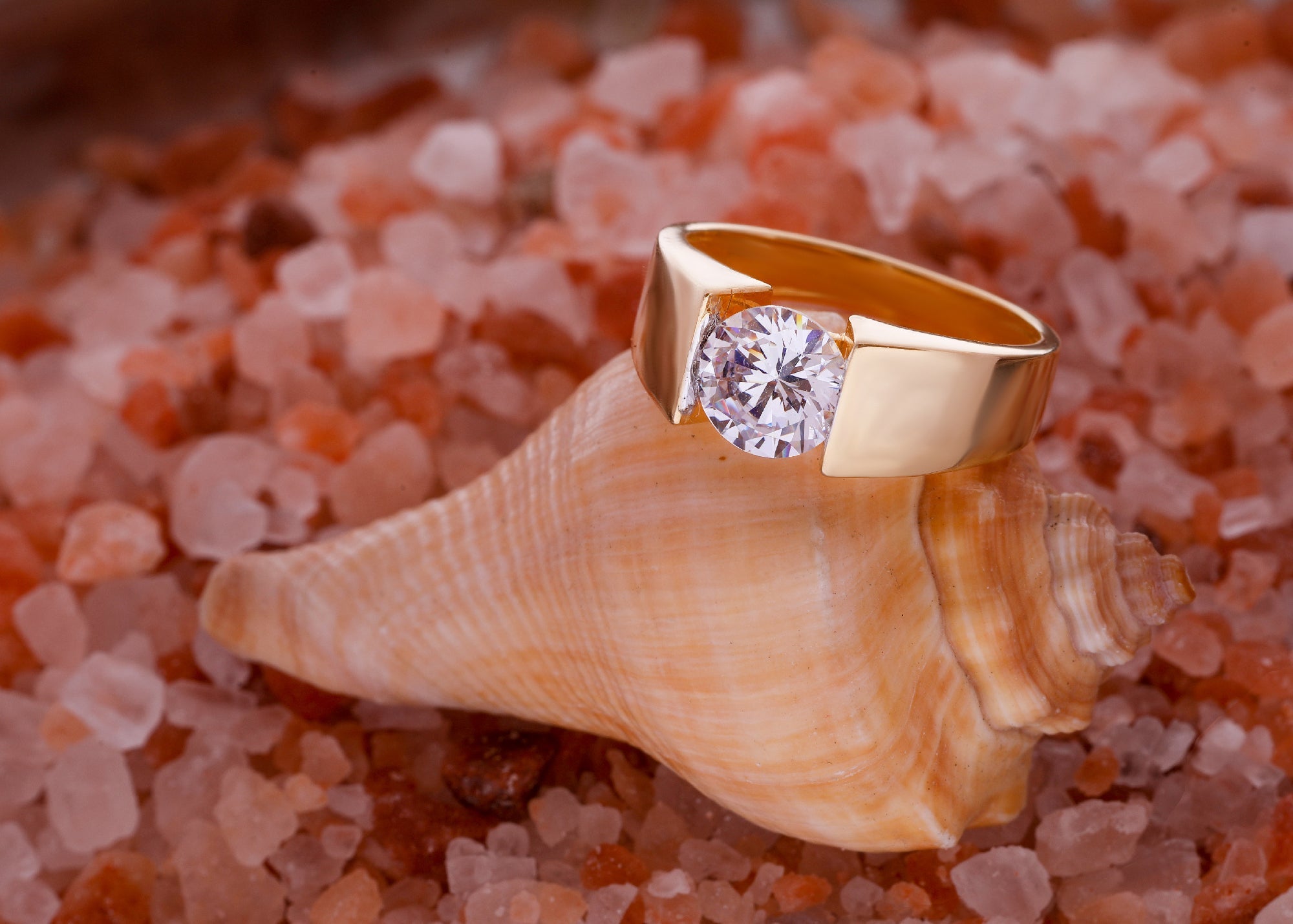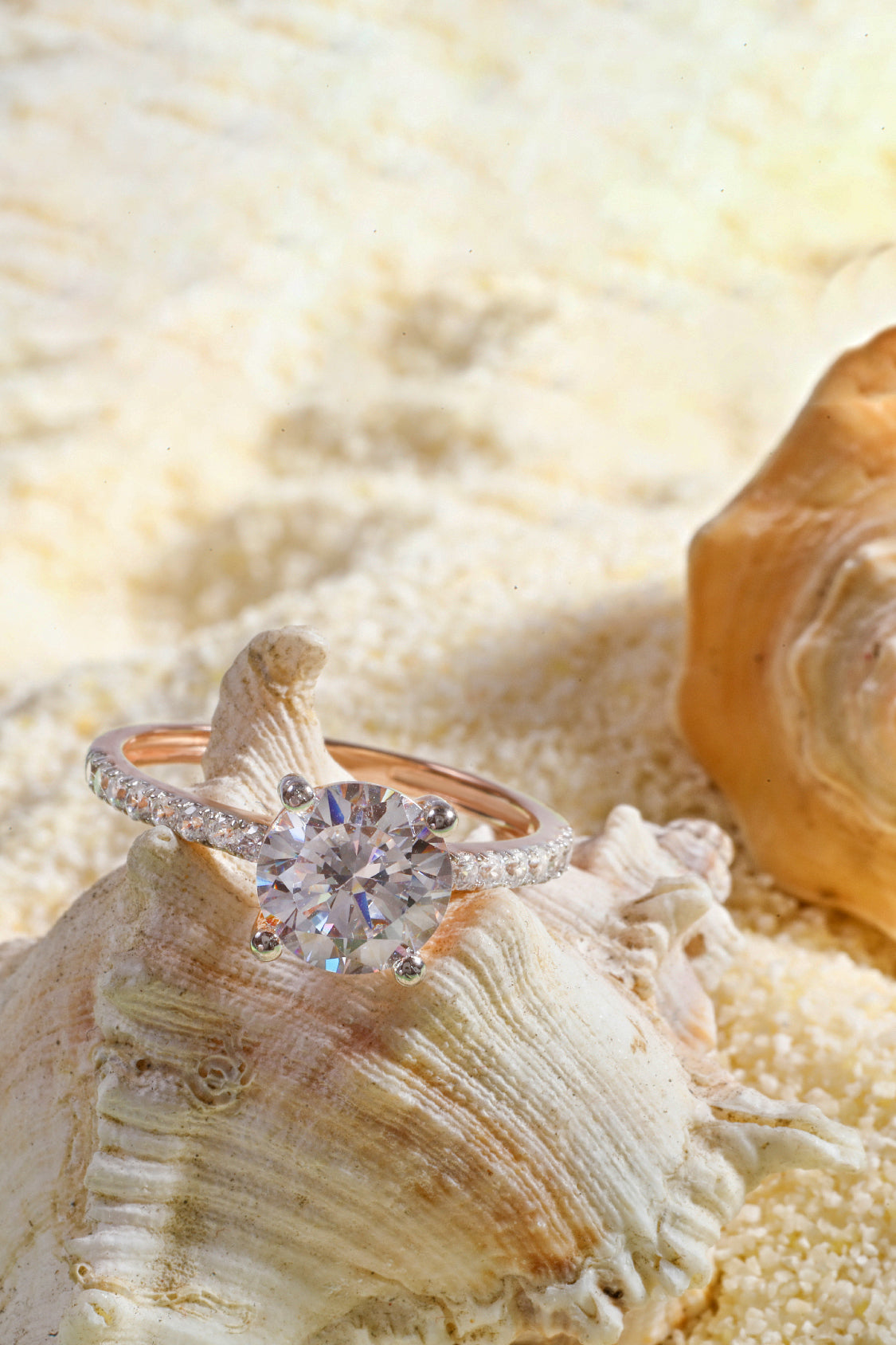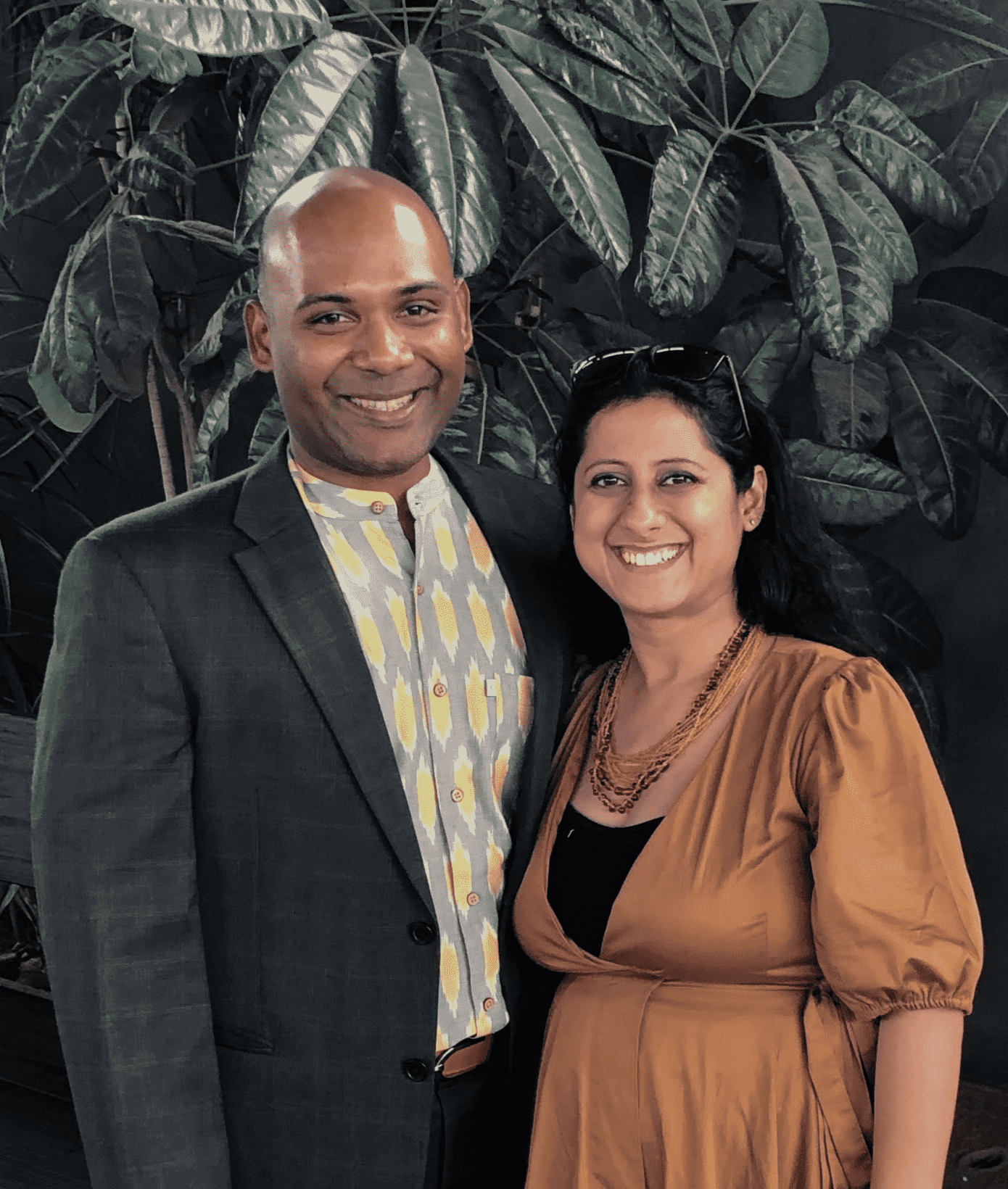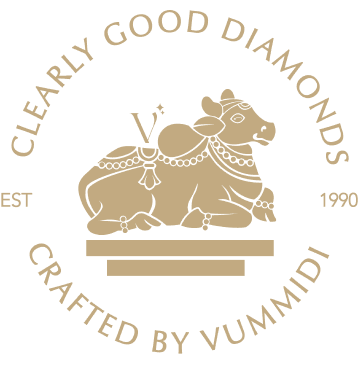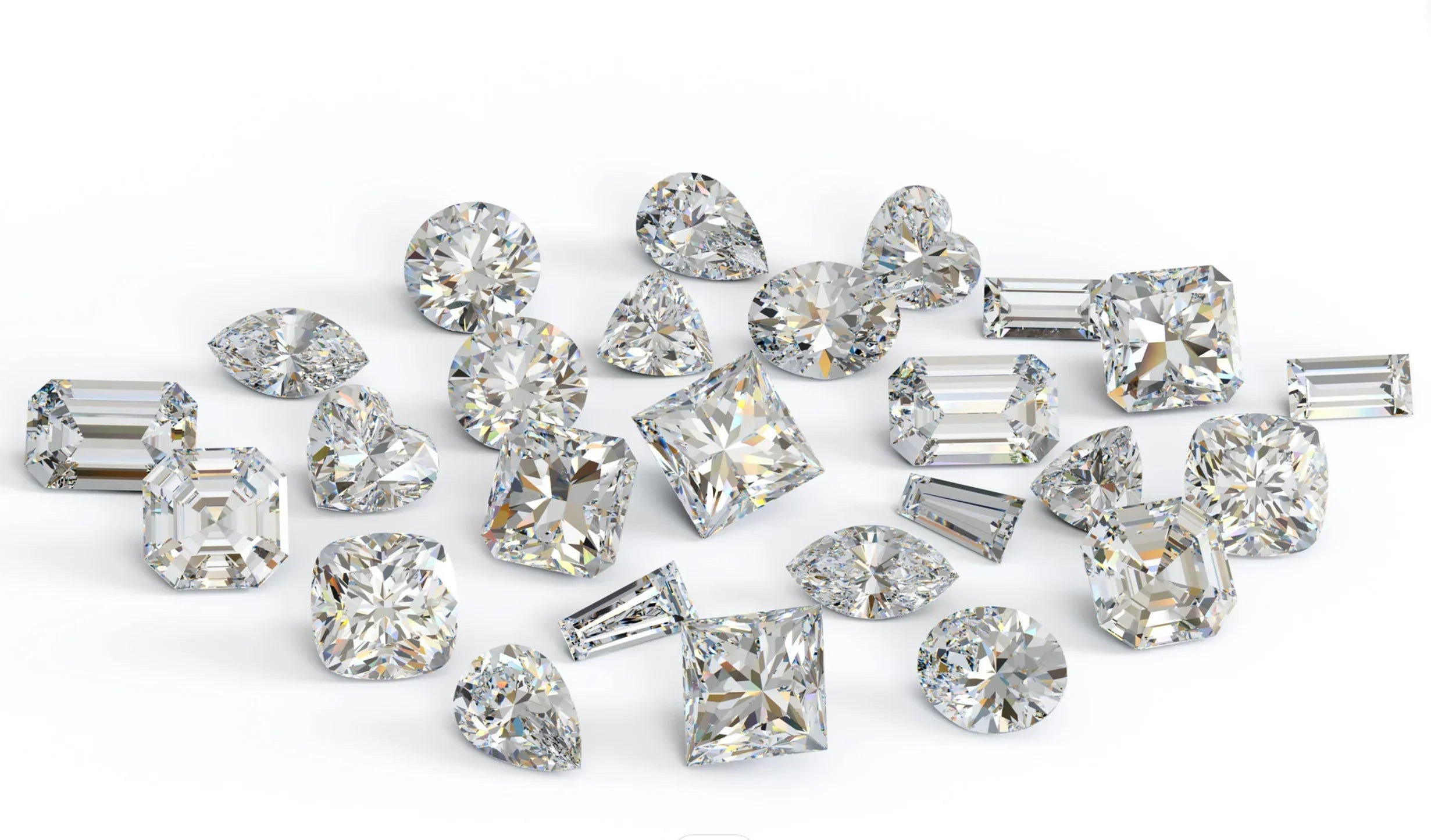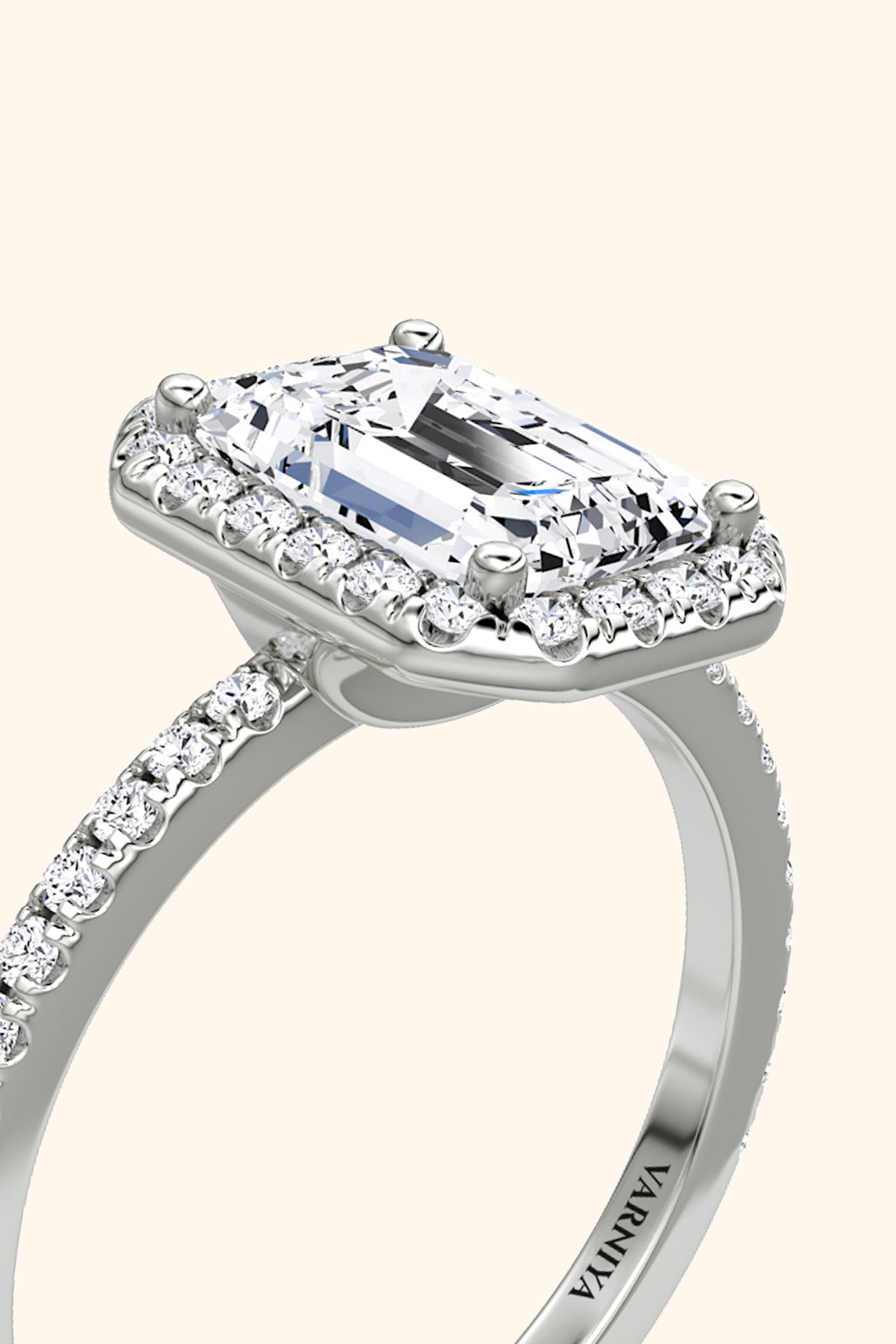
A Buying Guide for a Natural 2 Carat Diamond Ring (Not Lab Grown)
Looking for a natural 2 carat diamond ring not lab grown? Here's how to buy smart, avoid scams, and choose a stone that lasts a lifetime.
Thinking of buying a 2 carat diamond ring not lab grown? Smart move. Natural diamonds are rare, valuable, and timeless—unlike lab grown diamonds, which can lose up to 70% of their value after purchase (Forbes, 2024). That’s a big deal if you’re investing in something special.
Whether you’re planning a surprise proposal or just diamond-curious, this guide is here to make your search easier.
You’ll learn how to spot the difference, avoid overpriced fluff, and pick a ring that’s actually worth the price tag. Let’s help you get this right—because you’re not buying a snack, you’re buying forever.
Why choose a 2 carat natural diamond ring & not lab grown?
A natural diamond forms deep underground over millions of years. It's rare, unique, and real. On the other hand, lab grown diamonds are made in machines in a few weeks. mining.
Let’s talk numbers. A natural 2 carat diamond holds its value much better. In fact, many lab created diamonds lose over 50% of their price right after purchase. A 2ct diamond can cost 70% less when comparing lab-grown diamonds to natural ones.
That’s a big drop if you plan to resell it. Prices for natural diamonds are generally higher than lab-grown diamonds of the same characteristics, by about 30-50%.
When you buy a natural stone, you’re getting more than just sparkle. You're choosing a piece of Earth’s history. Plus, mined diamonds often come with GIA certification—proof of quality and origin.
Looking for a forever piece? A natural two carat diamond ring in a classic setting like a solitaire or three stone setting will always feel timeless.
What Makes a 2 Carat Diamond Engagement Ring So Special?
A two carat diamond ring not lab grown is more than just pretty—it’s a powerful mix of size, rarity, and real value. Many people choose it because it's big enough to feel luxurious but not too large for daily wear.
Buying a natural diamond engagement ring also means you're getting something truly unique, especially when looking for engagement rings . No two mined diamonds are the same. When certified by trusted labs like GIA, you can be sure of its diamond quality, clarity grade, and carat weight.
How big is a two carat diamond ring, really?
You might be wondering—what does two carats actually look like? Here’s what to know:
-
A 2 carat diamond is around 8.1 mm wide, similar to the size of a small button.
-
It looks bigger in a solitaire setting, especially with a round brilliant cut.
-
Shape matters: emerald, oval, or asscher cuts may appear larger or smaller.
-
Ask for a ring setting that suits your finger size—it makes a difference.
Diamond Quality: What to Look for In a Natural Two Carat Diamond
1. Prioritize Cut Grade Over Everything
Cut grade is the most important factor. A well-cut diamond reflects light better and gives you that sparkle everyone notices. Many diamond experts recommend focusing on diamond cut quality as it has the most impact on brilliance.
-
Always choose an “Excellent” or “Ideal” cut grade, especially with round brilliant cut diamonds.
-
Poor cuts will make even a 2 carat diamond look dull, no matter its size.
-
Stone quality and brilliance depend more on cut than carat weight.
2. Check Colour Grades Carefully
You might think diamonds are just white, but color plays a huge role in value.
-
Color is graded from D (colorless) to Z (noticeably yellow or brown).
-
For a natural two carat diamond, aim for G or better. It looks bright without the D-F price tag.
-
In a halo setting or solitaire setting, color becomes more visible. Choose wisely based on the ring style.
Quick Fact: According to the Gemological Institute of America (GIA), even one grade difference in color can impact price by thousands—especially in larger diamonds.
3. Clarity Counts - But Not Too Much
When picking a 2 carat diamond ring not lab grown, many people obsess over clarity. But here’s the truth: most small flaws (called inclusions) can’t be seen with the naked eye, unlike an internally flawless diamond .
So, should you go for “flawless”? Not really. You can save money by picking a diamond with slightly included clarity, as long as it looks clean when viewed normally.
Here’s what you should do:
-
Look for clarity grades between VS1 and SI1. These usually offer good sparkle without a high price.
-
Ask your jeweler to show you the stone under magnification.
-
Avoid overpaying for a “perfect” diamond that looks the same as one that’s slightly included.
4. Carat Weight Isn't Everything
Yes, a 2 carat diamond sounds impressive. But don’t just focus on the number. The way a diamond is cut and shaped affects how big it actually looks.
Here’s what really matters:
-
A poorly cut diamond ring may carry extra carat weight in hidden areas, like the bottom.
-
A well-cut 1.9 carat diamond may look bigger than a badly cut 2 carat one.
-
The setting also changes how large the diamond appears. A halo setting or solitaire setting can make it pop more.
Quick Check:
-
Ask for the cut grade, depth, and table percentages.
-
Don’t fall for listings that show price per carat without showing how the diamond shape affects sparkle.
5. Insist on Transparency and Return Policies
When buying a 2 carat diamond ring not lab grown, don’t just look at the sparkle—look at the store’s fine print too. A good jewelry seller will always be clear about what you’re getting. That means real photos, full details about the center stone, and clear return policies.
Ask these questions before you buy:
-
Does the diamond come with a GIA or clarity grade report?
-
Is the carat weight listed and verified?
-
Do they explain the quality of the stone in plain language?
-
What happens if you change your mind or spot a problem later?
Smart tip: Some sellers offer “final sale” prices to push lower price tags—but leave you stuck with no return option. That’s not worth saving a little less money.
Must - Know Diamond Certifications Before You
1. GIA (Gemological Institute of America)
If you only remember one name, make it GIA. The Gemological Institute of America is the most trusted grading lab in the world. GIA has been grading lab-grown diamonds since 2007, ensuring their credibility and quality.
-
GIA doesn't sell diamonds—they grade them.
-
Their reports are strict, accurate, and globally respected.
-
A GIA certified diamond often comes with a laser inscription on the girdle.
💬 “When in doubt, go GIA. They invented the 4Cs,” says Mark Hanna, CMO at Richline Group.
Always ask if your 2 carat natural diamond has a GIA report. It's a mark of real quality.
2. AGS (American Gem Society)
AGS is also a highly respected name, especially when it comes to cut grade. Their reports use a 0–10 scale, where 0 is the best.
-
AGS is known for excellent light performance grading.
-
Some jewelers prefer AGS when selling round brilliant cut or fancy shapes.
-
AGS reports are slightly less common than GIA but still reliable.
If sparkle is your priority, AGS is a great choice.
3. IGI (International Gemological Institute)
IGI is often used for lab created diamonds and diamonds sold in large chain stores.
-
IGI grading is more lenient compared to GIA or AGS.
-
That's why diamond prices with IGI certs may seem lower.
-
Good for budget-conscious buyers—but double-check the details.
Quick tip: If your ring is labeled “certified,” always ask who did the certification. That one question can save you thousands.
4. HRD (Hoge Raad Voor Diamant)
HRD is based in Belgium and is popular with European jewelers. It's considered reliable, but it's not as strict as GIA.
-
HRD uses similar grading terms, so you can compare.
-
It's best for buyers purchasing diamonds from Europe or international online stores.
-
Their reports include laser inscriptions and detailed charts.
“HRD is a solid option if you're buying from the EU, but always compare it with GIA if possible,” says jewelry analyst Peter Schick.
If you're considering a diamond engagement ring from a global retailer, HRD might be on the certificate. Just check the details.
5. EGL (European Gemological Laboratory)
Here's where you need to be careful.
-
EGL has a reputation for looser grading standards.
-
A diamond may look cheaper with an EGL report—but it may also be graded too generously.
-
That means you're paying for a diamond that might not match what's on paper.
Quick warning: Many experts recommend avoiding EGL unless you're a pro at comparing certified diamonds. The lab grown diamonds offer lower prices too—but EGL and weak certs can make things confusing.
Price Breakdown: How Much Should a 2 Carat Natural Diamond Cost? (Top Brands)
| Brand Name | Price Range (INR) | Certification Offered | Diamond Quality Notes | Best For |
|---|---|---|---|---|
| Tanishq | ₹5L – ₹11L | GIA, In-house Cert. | Reputed brand, BIS hallmark, premium pricing | Retail shoppers in India |
| Malabar Gold | ₹4.8L – ₹9L | IGI, SGL | Good polish and finish, regional variety | Value-conscious buyers |
| BlueStone | ₹4.2L – ₹8.5L | IGI | Online-first, 30-day returns, affordable | Online convenience & casual gifting |
| CaratLane | ₹4.8L – ₹9.2L | GIA, IGI | Trendy designs, Tanishq-backed, customizable | First-time buyers |
| NAC Jewellers | ₹5.2L – ₹10L | IGI, In-house | Traditional designs, Chennai-based brand | South Indian diamond ring buyers |
| Reliance Jewels | ₹4.7L – ₹8.8L | IGI, BIS | Budget-friendly, certified solitaires | Basic investment & gifting |
Lab Diamond vs Natural: Know the Difference Before You Buy
Some sellers use terms like “lab diamond” or “lab grown” without explaining what they mean. This causes confusion—and in some cases, costly mistakes. Lab-grown diamonds can be produced through methods like Chemical Vapor Deposition (CVD) or High Pressure High Temperature (HPHT).
Key things to know:
-
A lab diamond has the same chemical structure as a natural diamond but is grown in a factory.
-
Many online listings say “diamond” but are actually lab grown—you have to read the fine print.
-
Always check if the stone is “natural” or “lab created” before purchase. Ask for documentation.
-
For investment or heirloom purposes, natural diamonds hold far more long-term value. When shopping online, it is important to examine the diamond closely through high-resolution images and videos.
⚠️ Watch out for: Listings that say “real diamond” but bury the lab origin in the certification section. Reputable sellers follow the Kimberley Process to ensure their natural diamonds are conflict-free. The Kimberley Process has successfully prevented the flow of conflict diamonds for natural diamonds.
"Explore Varniya's collection of IGI-certified lab-grown diamonds, combining quality with sustainability. Shop now."
Choosing the Perfect Ring Setting for a 2 Carat Natural Diamond
Solitaire Setting vs. Three Stone Setting vs. Halo Setting
This comparison will help you choose the perfect design for your 2 carat diamond ring not lab grown. As, some ring designs use smaller diamonds around the main stone to enhance sparkle without raising the price.
| Feature | Solitaire Setting | Three Stone Setting | Halo Setting |
|---|---|---|---|
| Look & Style | Classic and minimal—focus is all on the center stone | Symbolic and balanced—represents past, present, future | Bold and dazzling—center stone surrounded by small diamonds |
| Best For | Highlighting the natural beauty of a 2 carat diamond ring not lab grown | Adding meaning and sparkle without overpowering the center | Making the diamond appear larger without increasing carat weight |
| Center Stone Visibility | Maximum visibility and light exposure | Enhanced by side stones, still prominent | Amplified with accent diamonds, adds visual impact |
| Cost Factor | More budget-friendly for the setting alone | Slightly higher due to extra diamonds | Higher due to extra stones but can save on center carat weight |
| Maintenance | Easiest to clean and maintain | Moderate—more edges and stones | Requires regular cleaning to keep accent stones sparkling |
| Style Appeal | Timeless and elegant | Romantic and meaningful | Glamorous and eye-catching |
Tip: A hidden halo setting can add extra sparkle from the side without changing the ring’s overall silhouette.
"Discover the Perfect Ring Setting with Varniya's Custom Design Services but for Lab Diamonds."
Best Diamond Shapes For A Two Carat Ring
Choosing the right shape for your 2 carat diamond ring not lab grown can change how big, bright, and beautiful the diamond looks on your hand. Some shapes make the stone appear larger.
Others give off more sparkle. The best shape really depends on your style, finger size, and how you want your ring to feel every day.
1. Round Brillaint
The most classic of all diamond shapes is a round shape. It has 58 cuts that reflect light brilliantly.
Best for: Anyone who loves maximum sparkle and a timeless look. If you want your 2 carat diamond to shine from every angle, this is the one.
Why people love it:
-
It hides inclusions and flaws well.
-
Looks stunning in solitaire setting or halo.
-
It's the most popular pick for engagement rings for a reason.
Fun fact: Over 60% of all round diamonds sold are chosen for engagement rings.
Traditional round diamonds are especially valued for their unmatched symmetry and shine.
2. Oval
An elongated version of the round, but with a softer, stretched look.
Best for: Making fingers look longer and slimmer. It also makes the diamond ring seem bigger than its actual carat weight.
Why people love it:
-
It offers more visible surface area than a round cut.
-
Great if you want a large-looking natural diamond without paying more for size.
-
Works well in both vintage and modern ring styles.
3. Emerald
A rectangular cut with step-like lines and an open table.
Best for: Those who love clean lines and a bold, elegant look. It doesn’t sparkle like a round cut, but it gives a mirror-like shine.
Why people love it:
-
Shows off the clarity and quality of the stone.
-
Ideal for people who prefer minimal or classic styles.
-
Pairs beautifully with bezel settings or three stone settings.
4. Cushion
A square or rectangular diamond with rounded corners, like a pillow—hence the name.
Best for: A romantic and vintage feel. It’s been around for 200+ years and is still a favorite.
Why people love it:
-
Great for showing off diamond quality with a soft, elegant look.
-
Hides visible inclusions well, especially when paired with a halo setting.
-
Works beautifully in antique-inspired ring styles.
Tip: Cushion cuts tend to hold color. For best results, aim for higher color grades, especially in natural diamonds.
5. Pear
A teardrop shape—one rounded side and one pointed end.
Best for: A unique, feminine look that elongates the fingers.
Why people love it:
-
Makes a 2 carat diamond look bigger than it is—more bang for your carat.
-
Sparkles well, especially with lab grown diamonds or high-clarity natural stones.
-
Often worn with the point up or down depending on personal style.
Reality check: Because of its pointed tip, pear shapes can show flaws near the end—ask to inspect it closely with the naked eye.
6. Radiant
A mix between a round brilliant cut and an emerald cut, with trimmed corners.
Best for: Someone who wants the shine of a round but in a square or rectangular shape.
Why people love it:
-
Offers excellent sparkle and hides inclusions well.
-
Adds a bold edge to a 2 carat diamond ring not lab grown.
-
Perfect for people who want something that looks both classic and modern.
Good to know: Radiant cuts often weigh more in the depth. So while your carat weight may be high, the surface area might look a bit smaller—ask your jewelry expert to explain how it’ll look in person.
7. Princess
A square-shaped diamond with sharp corners and lots of sparkle.
Best for: Modern styles and buyers who love clean lines with high shine.
Why people love it:
-
Gives a bold, contemporary look while keeping that bridal elegance.
-
Reflects light beautifully—great for hiding small flaws visible to the naked eye.
-
Works well in many ring settings, especially halo settings or side-stone designs.
8. Marquise
A long, pointed oval-like diamond with tips at both ends.
Best for: Making the diamond—and your finger—look longer and slimmer.
Why people love it:
-
Offers the largest face-up size of any diamond shape for the same carat.
-
Perfect for those who want a big look without increasing cost.
-
Looks gorgeous in vintage-style jewelry or paired with smaller accent diamonds.
Other shapes like baguette or heart-cut diamonds are less common but offer distinct personality.
FAQs
1. How does a 2 carat diamond ring compare to a 1 carat diamond ring?
-
A two carats diamond ring not lab grown is much bigger than a one carat diamond. In fact, it looks around 60% larger on your finger. But it doesn’t just look bigger—it also costs more.
-
That’s because the price per carat jumps with size and rarity. A 2 carat pear or oval diamond may cost approximately 10-15% less than a round diamond.
2. How much should I pay for a natural 2 carat diamond not lab grown?
-
Prices vary. A high-quality natural diamond with good clarity, cut, and no visible flaws can cost anywhere from $12,000 to $30,000 or more.
-
The price of a 2 carat diamond can vary from $5,000 to $60,000 or more, depending on the shape and stone quality. It depends on things like the diamond shape, color, and setting, but ensure you’re getting the same quality.
-
Pro Tip: Always check the center stone and make sure the seller offers GIA or AGS certification. That way, you know what you’re really paying for.
3. Does it matter if a diamond is lab grown?
-
Yes, it can. Lab grown diamonds are chemically identical to a mined diamond, but its value drops fast. According to experts, lab created diamonds can lose 50% or more of their value right after purchase.
-
If you're buying a ring as an investment or family heirloom, it’s smarter to go for a natural stone—especially in larger sizes like a 2 carat.
4. How do I know if my diamond ring is real and not lab created?
-
A real diamond ring should come with a grading report. Look for certification from trusted labs like GIA. The report will say if the stone is natural or lab grown.
-
Try This: Ask a jeweler to use a loupe or machine to inspect the stone. They can spot signs of a lab created diamond that aren’t visible to the naked eye.
Buying a 2 carat diamond ring not lab grown is a smart and lasting choice. It holds real value, looks stunning, and stands out from lab grown options. With the right cut, shape, and certification, you're not just buying jewelry—you're investing in something truly timeless. The ideal ring balances cut, clarity, and style to match your partner’s personality and daily lifestyle. Choose wisely, ask the right questions, and let your diamond speak for itself.


